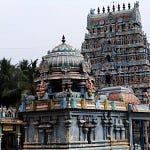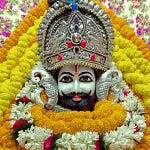India’s spiritual landscape is deeply intertwined with the worship of Lord Shiva - the cosmic ascetic, the destroyer of ignorance, the source of divine energy, and the eternal yogi. From Himalayan heights where the air whispers mantras to ancient stone temples along the coastline where the sea chants in unison, Shiva temples in India reflect centuries of devotion, intricate architectural mastery, and sacred symbolism.
Unlike any other deity, Shiva is worshipped in countless forms - lingam, jyotirlinga, swayambhu, ice formations, and sculptural grandeur. Each temple carries a distinct aura, born of mythological relevance, geographic sanctity, and ritualistic tradition. Pilgrims journey across mountains, forests, seas, and islands to connect with the transformative energy of Shiva. These sacred routes, collectively known as yatras, are believed to cleanse doshas, release karmic burdens, and bring blessings of liberation, health, and spiritual clarity.
This detailed guide unfolds the history, aura, unique rituals, architectural brilliance, and yatra culture of some of the most important Shiva temples of India.
1. Ramanathaswamy Temple – Rameswaram, Tamil Nadu
Significance & History
One of the twelve Jyotirlingas and a key part of the Char Dham Yatra, Ramanathaswamy Temple is believed to be the place where Lord Rama worshipped Shiva after defeating Ravana. Ancient scriptures mention that Rama installed a lingam made of sand here.
Architecture
The temple is known for having the world’s longest temple corridor - over 1,200 meters with 1,212 intricately carved pillars. The Dravidian-style architecture reflects the sophistication of Pandya and Jaffna rule.
Rituals & Pujas
22 Theertha Snanam – Pilgrims perform ritual bathing in 22 holy wells within the temple complex, each believed to have different medicinal and spiritual properties.
Swami Darshanam after the theertha-snanam removes sins and washes off doshas like Pitru Dosha and Graha Doshas.
Yatra Notes
Rameswaram is often visited before or after Kashi Vishwanath, as per tradition that completing both grants moksha.
2. Tungnath Mahadev Temple – Uttarakhand
Significance
Tungnath is the highest Shiva temple in the world and one of the Panch Kedars. Mythology states that the Pandavas sought Shiva’s forgiveness here, and his arms appeared at Tungnath.
The Trek
A 3–4 km trek from Chopta through deodar forests and meadows. High altitude and silence amplify its spiritual pull.
Rituals
Regular Rudrabhishek
Offerings of ghee and flowers
Special winter pujas performed when deities are shifted to Mukku village
Doshas & Beliefs
Pilgrims believe that visiting Panch Kedar removes sins related to violence, conflicts, and karmic burdens.
3. Brihadeeswara Temple (Thanjavur, Tamil Nadu)
History & Heritage
Built in 1010 CE by Raja Raja Chola I, this temple is a UNESCO World Heritage site. Known as the “Big Temple,” it is a masterpiece of Chola architecture.
Architecture
The massive vimanam (tower) never casts a shadow at noon.
The monolithic Nandi is among the largest in India.
Rituals
Daily pujas include:
Ushakala Pooja
Kalasanthi Pooja
Uchikala Pooja
Sayaratchai Pooja
Arthajama Pooja
Astrological Beliefs
This temple is known to balance energies; devotees with Saturn-related issues often pray here for strength, discipline, and mental clarity.
4. Omkareshwar Temple – Madhya Pradesh
Sacred Geography
Located on Mandhata Island shaped like the sacred symbol “Om,” Omkareshwar is both a jyotirlinga and a marvel of natural geometry.
Rituals
Maha Rudrabhishek
Laghu Rudra & Ati Rudra for major doshas
Narmada Parikrama, a circumambulation of the island, considered extremely holy
Yatra Insights
The presence of the Narmada River makes this temple a center for spiritual rejuvenation and energy cleansing.
5. Kashi Vishwanath Temple – Varanasi, Uttar Pradesh
World’s Spiritual Capital
Kashi is described in scriptures as the eternal city - one that even time does not destroy. The Vishwanath Jyotirlinga symbolizes liberation from the cycle of life and death.
Temple Legacy
Newly renovated under the Kashi Vishwanath Corridor Project, the temple is now more accessible and grand.
Rituals
Mangala Aarti (early morning)
Bhog Aarti
Saptarishi Aarti
Shringar Aarti
Doshas Cleansed
Pitru Dosha
Kaal Sarp Dosha
Karmic doshas
Performing rituals here with Ganga jal is considered extremely powerful.
Yatra Note
Traditionally, pilgrims visit Rameswaram after Kashi to complete the spiritual circle.
6. Somnath Temple – Gujarat
History of Resilience
Somnath, the first of the jyotirlingas, was destroyed and rebuilt multiple times by invaders. Its current form stands as a symbol of devotion’s endurance.
Architecture
The temple faces the Arabian Sea; the uninterrupted sea line is highlighted with the “no land” inscription.
Rituals
Somnath Aarti conducted thrice a day
Rudrabhishek with Panchamrut
Special Shravan month festivities
7. Mahakaleshwar Temple – Ujjain, Madhya Pradesh
Unique Attributes
Only south-facing jyotirlinga
Governed by the concept of “Mahakal” - the lord of time
Home to the famous Bhasma Aarti
Bhasma Aarti
Performed every dawn using sacred ash. Devotees believe it destroys ego and attachment, reminding one of life’s impermanence.
Doshas & Rituals
Kaal Sarp Pooja
Mahamrityunjaya Jaap
Graha Shanti Poojas
8. Trimbakeshwar Temple – Nashik, Maharashtra
Significance
One of the most powerful jyotirlingas, known for its tri-faced lingam symbolizing Brahma, Vishnu, and Shiva.
Rituals
Narayan Nagbali pooja
Kaal Sarp Dosha Nivaran
Pitru Shanti rituals
These are overseen by trained tantriks and vedic priests.
Astrological Relevance
This temple is a major center for horoscope-related remedies.
9. Shore Temple – Mahabalipuram, Tamil Nadu
Historical Significance
Built during the Pallava dynasty in the 8th century, the Shore Temple stands along the Bay of Bengal and is part of the UNESCO World Heritage Sites.
Art & Architecture
Although not a jyotirlinga, its coastal placement and intricate sculptures reflect Shiva’s artistic worship.
Rituals
Daily abhishekams
Annual Mahashivratri celebrations
Part of Mamallapuram Dance Festival visit circuits
10. Lingaraj Temple – Bhubaneswar, Odisha
Sacred Fusion
Lingaraj is dedicated to Harihara, a fused form of Shiva and Vishnu. Built in the 11th century, it is a major center of Kalinga architecture.
Rituals
Abhishek with Baitarani water
Mahabhisheka
Seasonal celebrations like Shivaratri and Ratha Yatra (unique to this temple)
Beliefs
Devotees consider this temple beneficial for emotional healing and protection from planetary obstacles.
11. Amarnath Cave Temple – Jammu & Kashmir
Sacred Ice Lingam
The naturally formed snow lingam waxes and wanes with the lunar cycle - considered a direct manifestation of Lord Shiva.
It is believed that Shiva narrated the secret of immortality (Amar Katha) to Parvati here.
Yatra Details
Accessible via two routes:
Pahalgam route – longer, scenic
Baltal route – shorter, steeper
Ritual Importance
The yatra is believed to remove deep-rooted karmic doshas and bring spiritual awakening.
12. Kedarnath Temple – Uttarakhand
Sacred Power of the Himalayas
One of the Char Dham and Panch Kedar, Kedarnath’s stone temple stands against dramatic Himalayan peaks.
The hump of Lord Shiva appeared here when he took the form of a bull to evade the Pandavas.
Rituals
Daily abhisheka performed by Rawal priests from Karnataka
Special Shravan month pujas
Winter pujas conducted in Ukhimath
Yatra Insights
Pilgrims undertake a challenging trek but claim to feel a transformative spiritual presence at the temple.
Shiva temples across India are not just religious structures - they are spiritual ecosystems where architecture merges with mythology, rituals with science, and devotion with nature. Whether it is the Himalayan calm of Kedarnath, the coastal grandeur of Somnath, or the artistic brilliance of Brihadeeswara, each temple offers a unique doorway into the timeless energy of Shiva.
These pilgrimages, rituals, and sacred practices are believed to help devotees:
remove karmic doshas
gain clarity and inner strength
experience divine protection
attain peace and spiritual evolution
A journey through these temples is not merely travel -it is a transformative exploration of India’s oldest spiritual traditions.









